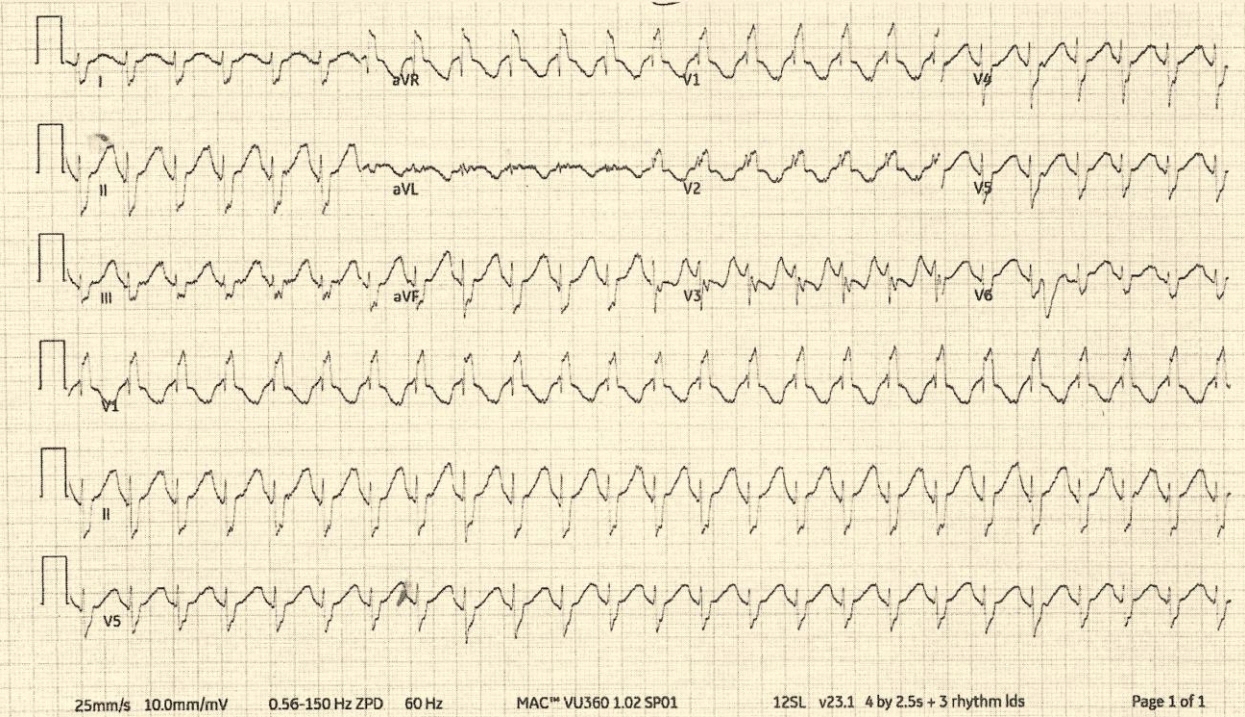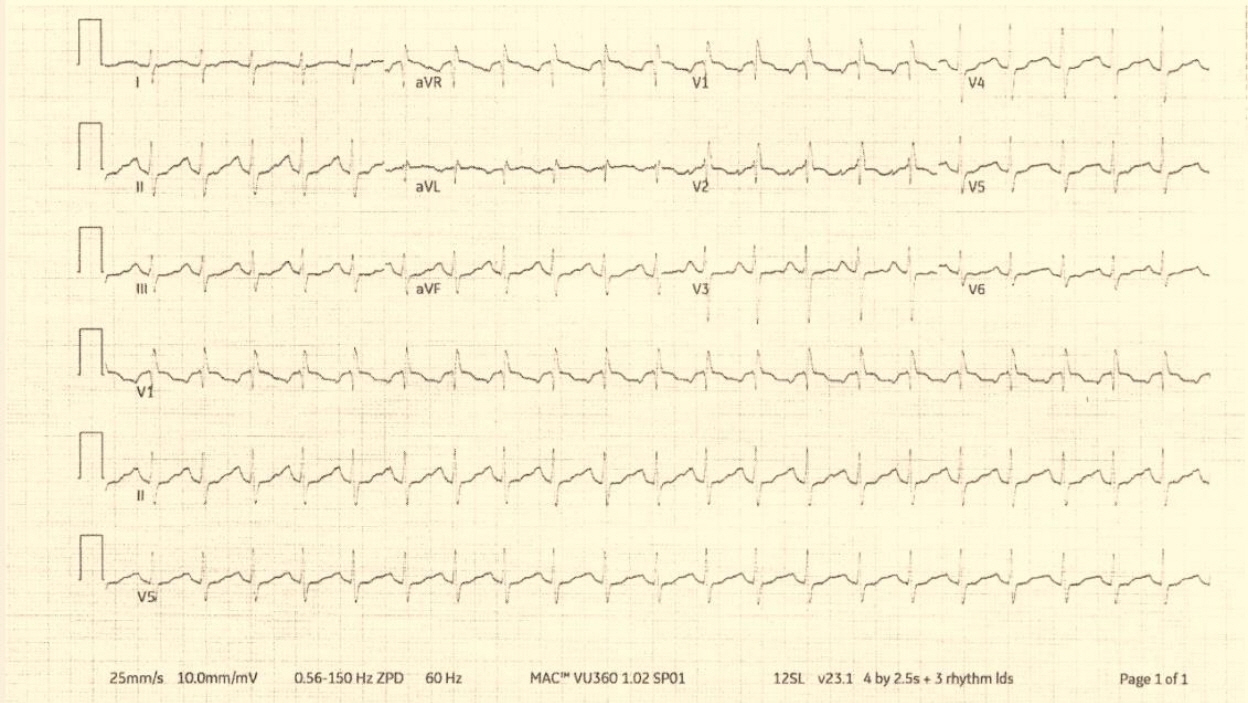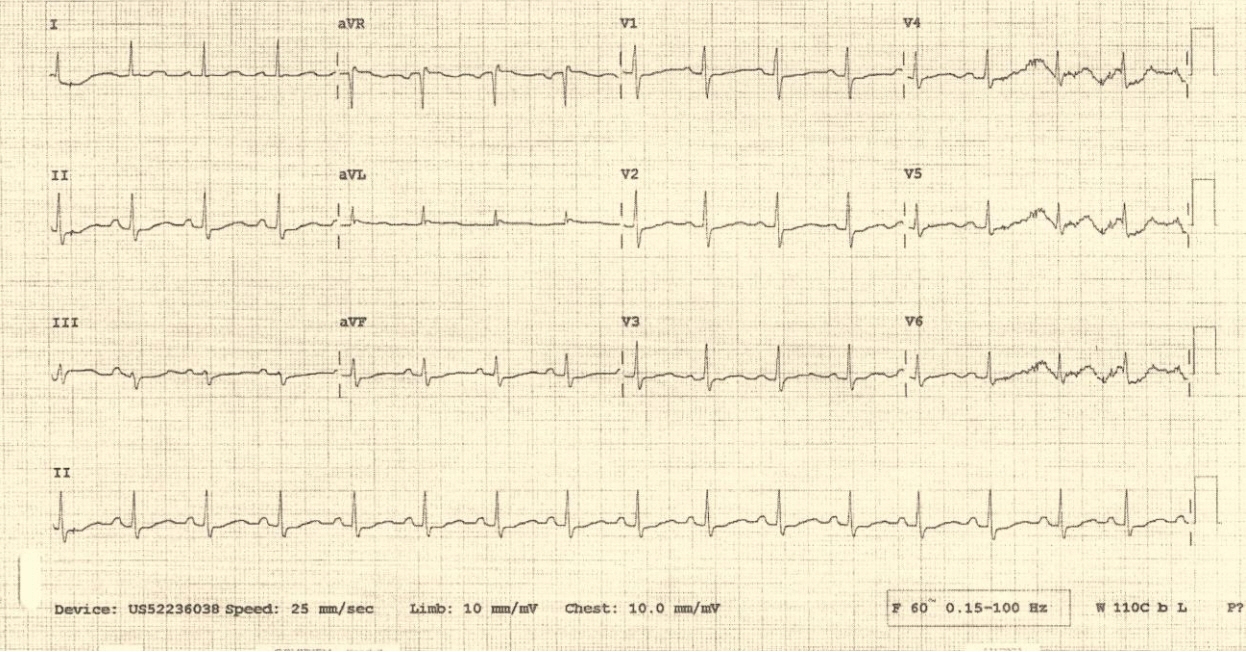Pediatr Emerg Med J.
2024 Oct;11(4):185-190. 10.22470/pemj.2024.01046.
An adolescent case of doxylamine-induced widening of QRS complex
- Affiliations
-
- 1Department of Emergency Medicine, Denver Health, Denver, CO, USA
- 2Rocky Mountain Poison and Drug Safety, Denver, CO, USA
- 3Department of Pediatric Critical Care, The Children’s Hospital Colorado, Aurora, CO, USA
- KMID: 2559552
- DOI: http://doi.org/10.22470/pemj.2024.01046
Abstract
- Doxylamine is an over-the-counter first-generation antihistamine used in the treatment of allergies and insomnia. Intentional ingestion is common due to its wide availability. Toxicity most frequently presents as an anticholinergic toxidrome with central effects leading to delirium, psychosis, or seizures, and peripheral effects manifested as tachycardia, dry and warm skin, mydriasis, or urinary retention. First-generation antihistamines can have antagonistic properties against the sodium channels on the cardiac myocytes in supratherapeutic doses. This article reports a polysubstance ingestion of 2 antihistaminergic agents with development of QRS complex widening and a right bundle branch block, which has not been well described in the literature.
Figure
Reference
-
References
1. Köppel C, Tenczer J, Ibe K. Poisoning with over-the-counter doxylamine preparations: an evaluation of 109 cases. Hum Toxicol. 1987; 6:355–9.2. Derinöz-Güleryüz O. Doxylamine succinate overdose: Slurred speech and visual hallucination. Turk J Pediatr. 2018; 60:439–42.3. Syed H, Som S, Khan N, Faltas W. Doxylamine toxicity: seizure, rhabdomyolysis and false positive urine drug screen for methadone. BMJ Case Rep. 2009 Mar 17 [Epub]. https://doi.org/10.1136/bcr.09.2008.0879.4. Carrascosa MF, Caviedes JR, Lucena MI, Cuadrado-Lavín A. Syndrome of inappropriate antidiuresis in doxylamine overdose. BMJ Case Rep. 2012; 2012:bcr-2012-007428.5. Jo YI, Song JO, Park JH, Koh SY, Lee SM, Seo TH, et al. Risk factors for rhabdomyolysis following doxylamine overdose. Hum Exp Toxicol. 2007; 26:617–21.6. Lee YD, Lee ST. Acute pancreatitis and acute renal failure complicating doxylamine succinate intoxication. Vet Hum Toxicol. 2002; 44:165–6.7. Paudel G, Syed M, Kalantre S, Sharma J. Pyrilamine-induced prolonged QT interval in adolescent with drug overdose. Pediatr Emerg Care. 2011; 27:945–7.8. Wu Chen NB, Schaffer MI, Lin RL, Kurland ML, Donoghue ER Jr, Stein RJ. The general toxicology unknown. II. A case report: doxylamine and pyrilamine intoxication. J Forensic Sci. 1983; 28:398–403.9. Thakur AC, Aslam AK, Aslam AF, Vasavada BC, Sacchi TJ, Khan IA. QT interval prolongation in diphenhydramine toxicity. Int J Cardiol. 2005; 98:341–3.
- Full Text Links
- Actions
-
Cited
- CITED
-
- Close
- Share
- Similar articles
-
- QRS complex
- A case of deliriumm following the overdose of doxylamine and alcohol ingestion
- A case of hyperkalemia-induced complete atrioventricular block with a narrow QRS complex
- A Case of Severe Rhabdomyolysis with Acute Renal Failure after Doxylamine Overdose
- A Case of Rhabdomyolysis after Doxylamine Overdose




